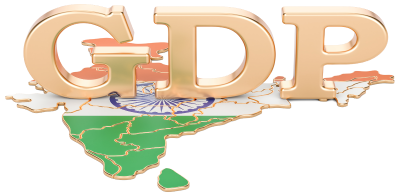The Revised Indian GDP Numbers
GDP numbers are very important as they reflect the economic health of a country. It is for this reason that these numbers are released only after conducting a lot of due diligence. In India, this task of collating the data, performing analyses as well as releasing the headline numbers to the general public is done by Central Statistical Organization (CSO). The CSO is supposed to be an impartial body which is why the data provided by them is often accepted by all. However, the impartiality of CSO has been called into question in 2018.
The new Indian government (led by BJP) has ordered CSO to release revised data pertaining to the years from 2004 to 2011 when India was under the rule of their political opponents i.e. the Indian Congress. The problem is that these new numbers show the Indian economy as well as the Congress government in a bad light. As a result, a political fight has begun. Allegations and counter allegations are flying on both sides.
Congress is of the opinion that BJP is changing records to make its economic performance look better. On the other hand, BJP is of the opinion that Congress in the one that had manipulated data in the past, BJP is only doing the corrections and bringing the data at par so that it can be compared with the current data.
The fact that the elections to the Indian central government are due in 2019 is not helping at all. A purely economic issue has been turned political. In this article, we will understand the economic basis for revising these GDP numbers. We will also try and understand whether these changes have an impact on the Indian economy.
Why Has The GDP Data Changed?
The Indian GDP data has changed because there is a change in the base year. The base year is used to calculate real GDP. The idea is that the output of the current year should be multiplied by the prices that were prevalent in the base year. This helps us understand the effect of the change in output since there is no change in price from year to year.
As per international conventions, the base year needs to be changed every five years or so. This is what is followed by most nations across the globe. This is also what has been listed by United Nations in their guidelines for preparations of national accounts.
At the present moment, the Indian government was using 2004-05 as its base year. However, given the fact that the base year had to be changed every five years, the base year was changed in 2015. 2011-12 was selected as the new base year for preparation of India’s GDP figures.

What Is GDP Back Series?
After the base year is changed, the old GDP numbers and the new GDP numbers do not remain comparable. This is because the old numbers were prepared based on a different price level which may have undergone a change. Hence, it is a convention to revise GDP numbers of previous years based on price levels in the new base year.
For instance, the output of goods and services from the year 2005 will be considered. However, this output will be multiplied by the price prevalent in 2011-12 i.e. the new base rate. The data so generated will be called the GDP back series of 2005. If the figures of 2015 have to be compared with previous GDP, they will have to be compared with 2005 back series and not the original 2005 GDP data.
Why Does the GDP Back Series Matter?
The country of India may be divided on religious lines. However, economic growth is still a huge election issue. The Congress government has always projected the years of its government as India’s glory days. This is because as per old GDP data, India clocked as much as 10.5% GDP growth. The Congress has always used this fact to try and convince the Indian population to vote for them.
However, after this amendment, the GDP numbers have changed drastically. The 10.5% growth recorded in 2011 has been scaled to 8.5% now. Such downward revisions have happened for almost every year. As a result, the average growth rate during the 2004 to 2011 period has been revised from 7.75% to 6.82%
Is The GDP Back Series An Economic Problem?
The current government has been firm on its stand that it is not manipulating any data. The BJP has stated that all their GDP numbers have been calculated based on the new method and it is only rational to harmonize the old data as well. The data would have been partial had a different yardstick been used for the BJP but that is not the case.
However, the release of the new GDP back series does bring into question the accuracy of data that is released by the Indian government. Global investors have already started sidelining China because of the opaque nature of data released by their government. If Indian GDP numbers are routinely revised drastically, the world will stop trusting the numbers. That would obviously have a huge impact on the investment inflows into the Indian economy.
| ❮❮ Previous | Next ❯❯ |
Authorship/Referencing - About the Author(s)

The article is Written and Reviewed by Management Study Guide Content Team. MSG Content Team comprises experienced Faculty Member, Professionals and Subject Matter Experts. We are a ISO 2001:2015 Certified Education Provider. To Know more, click on About Us. The use of this material is free for learning and education purpose. Please reference authorship of content used, including link(s) to ManagementStudyGuide.com and the content page url.